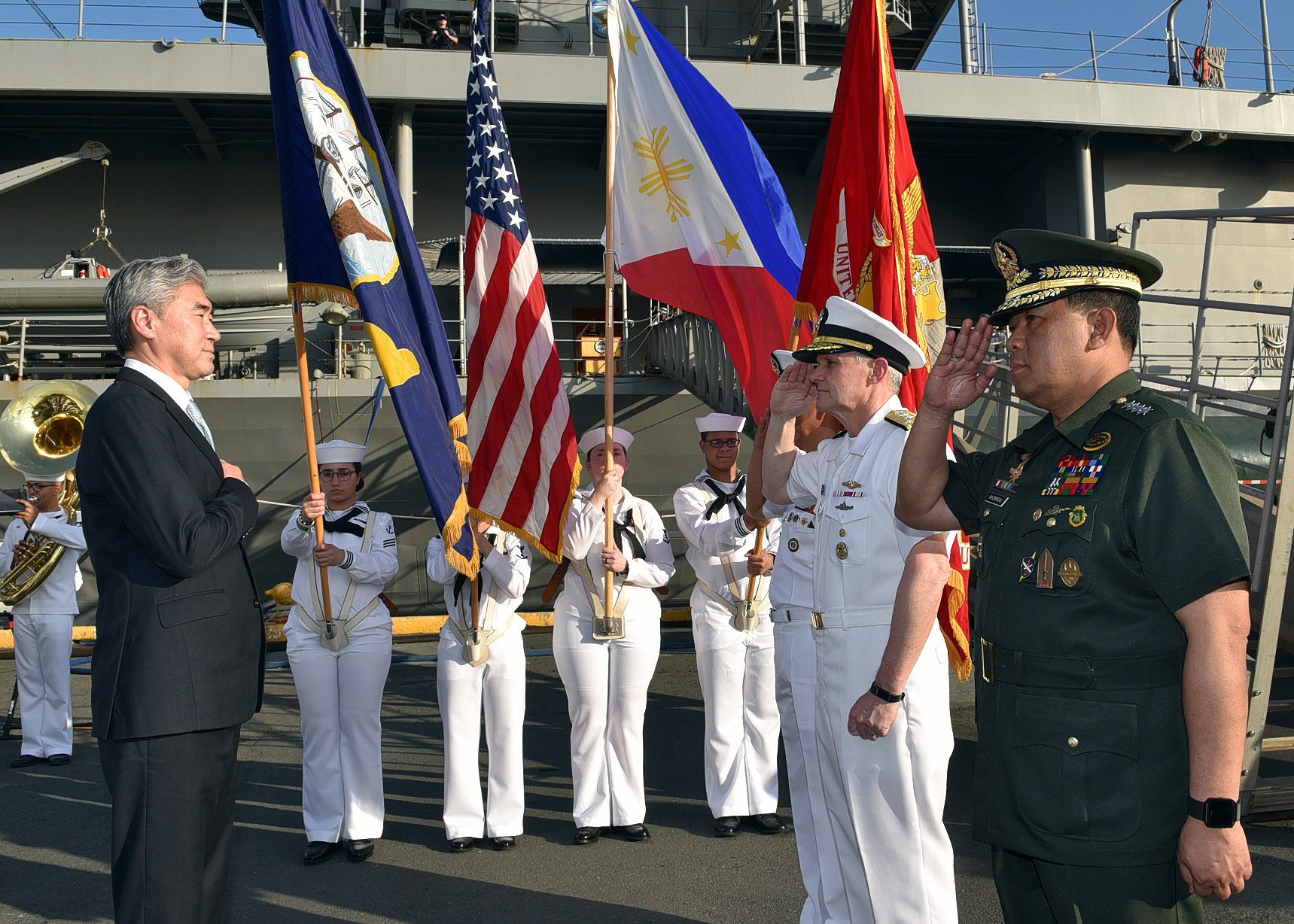Hung Cao – A Navy Diver In The Pentagon Briefing Room
Hung Cao and the Fight to Rebuild America’s Maritime Power Before the Next War Arrives by Captain John Konrad (gCaptain) The first thing you notice about the US Navy’s Undersecretary...

By Karen Lema (Reuters) – The Philippines identified on Monday four more of its military bases that the United States will get access to, almost doubling the number included in a defense agreement that seeks to advance a decades-old alliance between them.
The expansion of the Enhanced Defense Cooperation Agreement (EDCA) underlines the Philippines’ strategic importance to the former colonial ruler the United States, coming at a time of growing concern over China’s conduct in the South China Sea and tension over self-ruled Taiwan.
The EDCA, signed in 2014 under U.S. President Barack Obama, allows U.S. access to Philippine bases for joint training, pre-positioning of equipment and building of facilities such as runways, fuel storage and military housing, but it is not a permanent presence.
The sites named on Monday are the Camilo Osias navy base in Sta Ana and Lal-lo airport, both in Cagayan province, and Camp Melchor Dela Cruz in Gamu, Isabela province and the island of Balabac off Palawan.
The locations are significant, with Isabela and Cagayan facing north towards Taiwan, while Palawan is near the disputed Spratly Islands in the South China Sea, where China has built artificial islands equipped with runways and missile systems.
Defence chief Carlito Galvez called the sites “very strategic” and stressed the Philippines had a responsibility to the international community in the South China Sea.
“That’s a trade route… where more or less $3 trillion trade passes (annually),” he said.
“Our responsibility to collectively secure that is huge.”
The decision of President Ferdinand Marcos Jr to expand the U.S. access was made in February but the announcement of the sites was delayed by opposition from some local government leaders concerned about being caught up in a future conflict between the United States and China.
China’s embassy in Manila did not immediately respond to a request for comment on Monday’s announcement. China has accused the U.S. of increasing tensions with its military deployments.
Marcos’ office on Monday said the four locations should “boost the disaster response” and help humanitarian and relief operations, adding defending the east cost was also taken into consideration.
“Their locations are in areas where they are needed,” said Jay Batongbacal, a South China Sea expert at the University of the Philippines.
“It also provides us with coverage not only on the West Philippine Sea (South China Sea) but also on the Pacific side,” he added.
The United States has committed more than $80 million worth of infrastructure at the five existing sites – the Antonio Bautista Air Base in Palawan, Basa Air Base in Pampanga, Fort Magsaysay in Nueva Ecija, Benito Ebuen Air Base in Cebu and Lumbia Air Base in Mindanao.
U.S. forces were evicted from Subic and Clark, the last and largest of their permanent bases in the Philippines, in 1992, amid a nationalist backlash. Ties were rebuilt after 2000, with multiple joint exercises each year.
(Addirional reporting by Neil Jerome Morales; Editing by Martin Petty)

Sign up for gCaptain’s newsletter and never miss an update

Subscribe to gCaptain Daily and stay informed with the latest global maritime and offshore news
Essential news coupled with the finest maritime content sourced from across the globe.
Sign Up